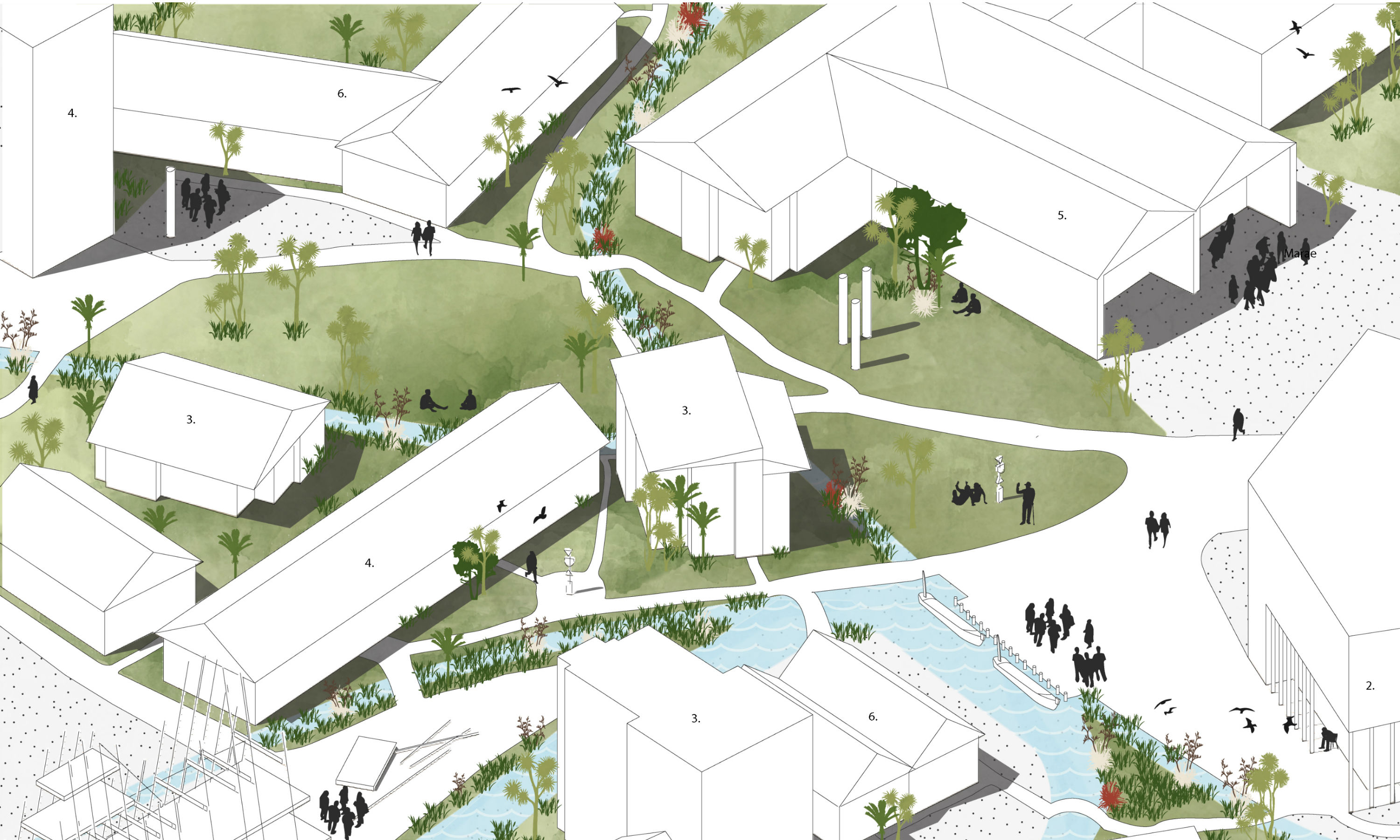Māori cultural values shape a ‘decolonised’ design for Porirua city
Master of Architecture student William Hope helped design an alternative ‘declonised’ Porirua aimed at creating a synergy between Western urban planning innovation and Tikanga Māori principles and customs.

William and three friends entered their design into last year’s Imagining Decolonised Cities competition and it was awarded first-equal. The competition encouraged entrants to submit urban designs for a decolonised city, designed in a way that better reflects Māori identities and values that have not always been reflected in post-colonial urban planning.
The team’s design took a decentralised approach. It was based on the historic location of eight Māori pa sites from Titahi Bay to Mana, and encouraged locals to connect with the land and Te Awarua o Porirua Harbour.
“By having a decentralised city model the infrastructure is spread around the harbour, creating less demand on the land and bringing inhabitants closer to the natural environment, and the history of their ancestors,” said William.
Aspects of their urban design included accessible education, communal spaces such as community gardens and open green reserves and parks, and a hakari stage for celebrations and rituals.
The proposal incorporated the concept of Wairuatanga, the spiritual connection between people and their environments. Their city was orientated in two directions, toward Whitireia the mountain of Ngati Toa and the celestial position of the Matariki star cluster on the horizon.
“Historically, Māori Iwi tribes in the region navigated the landscape through passages in the wetland. We introduced these wetlands as canals to connect from the Marae and city to the surrounding harbour,” William said.
The entry drew on the team’s varied backgrounds—Megan Robertson a law and arts student and Caroline Hope an engineering student, both from The University of Auckland, and Julia Hope a textile design student at Massey University.
William said, “There is a lot to learn from tangata whenua and our team hoped to contribute to a conversation around how to create modern spaces that are truly bicultural.”
Head of the School of Architecture Morten Gjerde said, “The winning entry is a great example of how we can use urban design to create spaces and places for people to thrive. We are really proud of William’s entry as it shows some of the exciting thinking happening in our School in this space.”
The competition ran in May 2017 and was funded by New Zealand National Commission for United Nations Educational, Scientific and Cultural Organisation (UNESCO).
